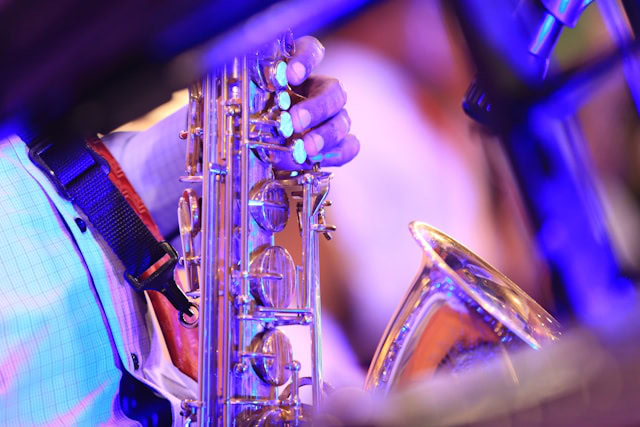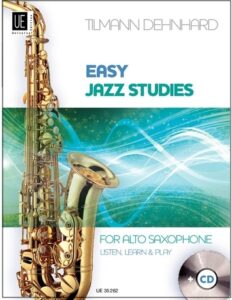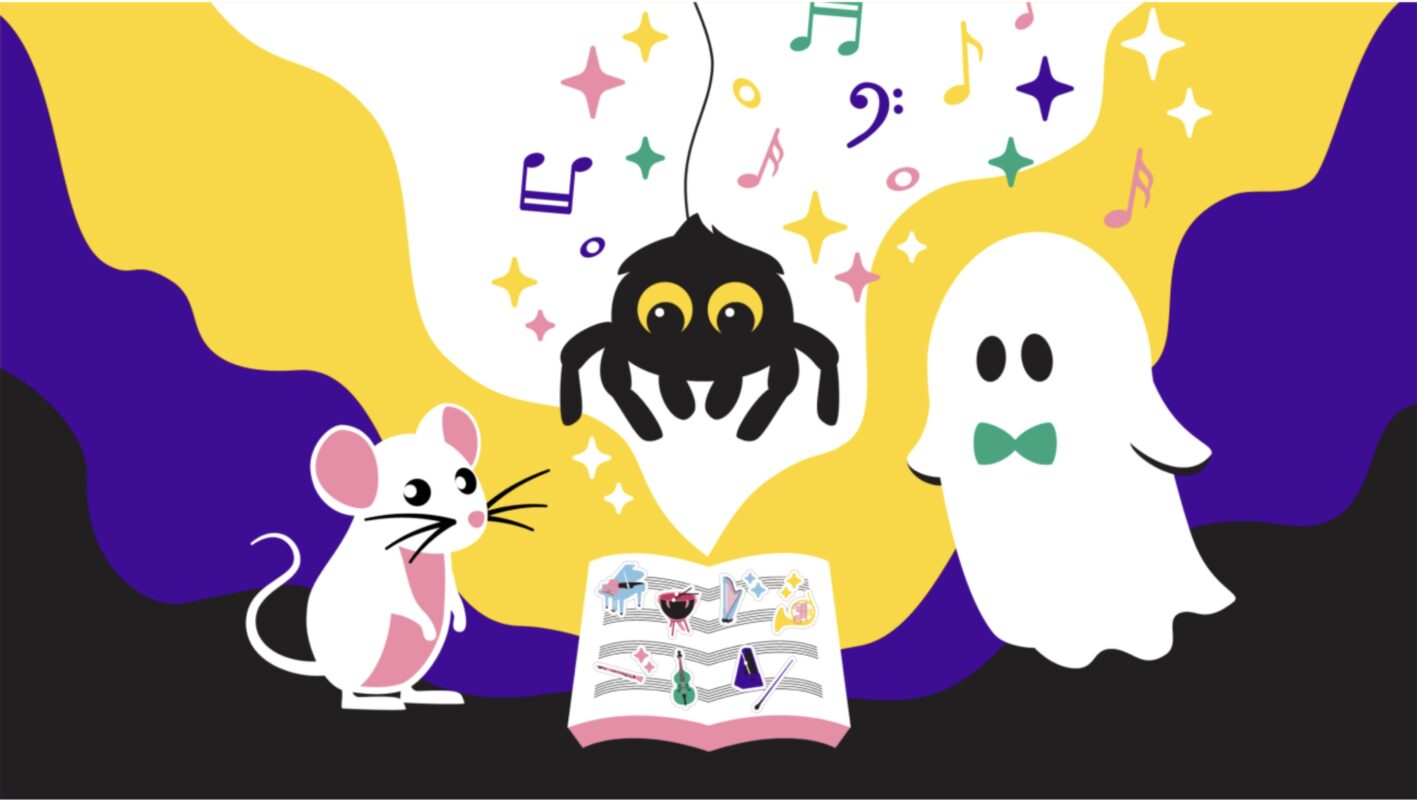Improvisation, jazz and klezmer
A particularly successful introduction to jazz improvisation, now also for tenor saxophone; Klezmer for two and a well-guided introduction to jazz.

Charlier and Sourisses introduce you to improvisation
The outstanding magazine, Initiation et perfectionnement à l'improvisation, which was previously only available for alto saxophone, is now also available as an edition for the tenor instrument. It contains ten pieces on common chord progressions (blues, anatole/turnaround), standards (Doxy, So What ...), but also a bossa nova, a batucada, a modal piece with "Celtic" echoes reminiscent of Jan Garbarek, etc. The first piece, which is formally quite demanding and based on alternating Ionic scales, is somewhat unwieldy. However, this should not deter you from immersing yourself further, as the other themes are catchy and supported by a great rhythm section: the two authors, André Charlier and Benoît Sourisse, completed by Jean-Michel Charbonnel on bass.
The concept is not new, but is excellently implemented with good notation. For each piece, the authors provide some precise explanations (in four languages) on improvisation, which give the pupils hints on stylistic and harmonic conditions. The tempos are moderate, the notated solos not too difficult - before Stéphane Guillaume on tenor sax shows how he would play if this were not an educational publication. The play-along versions each offer approx. 5 minutes to try out your own ideas.
Les cahiers Charlier Sourisse, Initiation et perfectionnement à l'improvisation, pour saxophone ténor, livre avec CD, AL 30544 (livre) + 30545 (CD), ca. € 17.75 + 7.95, Alphonse Leduc, Paris 2012
Discover Klezmer with two saxophones in two equal parts.
The klezmer duos from Universal Edition's World Music series are a real enrichment to the saxophone repertoire. Nine traditional and four musically equivalent new compositions by the editor Michael Lösch are waiting to be discovered by enthusiastic pupils of intermediate playing level and above. The quality of the arrangements is demonstrated by the fact that the second part is just as interesting as the first in every respect. At times it is a lively, rhythmic bass line, at others a parallel lower or upper voice, but never in a register that would hinder the liveliness of the music. Fortunately, this also applies to the added tenor sax part. The duos are not difficult, but they are only really fun if you can get close to the given tempi without being overwhelmed.
Michael Lösch, Klezmer Saxophone Duets (AA / AT), UE 33062, € 17.50, Universal Edition, Vienna 2012
Good guided introduction to jazz with "adaptable" accompaniment CD.
The ten pieces provide students who have learned the basics of saxophone playing with practice material to get them started in jazz. The phrasing is precisely notated, the keys are simple, the range is comfortable, and the accompanying CD provides up to three different tempos, allowing the pieces to be played at different technical levels. The harmonic background of the pieces are well-known jazz standards on the one hand, and blues forms enriched with quotations on the other.
The sound of the saxophone on the CD is light and somewhat undercooled, the rhythm section without drums is not loud, but precise and easy to understand. At best, you can hear from the accompanying band that the author originally wrote the pieces for flute, as mentioned in the foreword.
Tilmann Dehnhard, Easy Jazz Studies, for alto saxophone, UE 35262, with CD, € 17.50, Universal Edition, Vienna 2012








